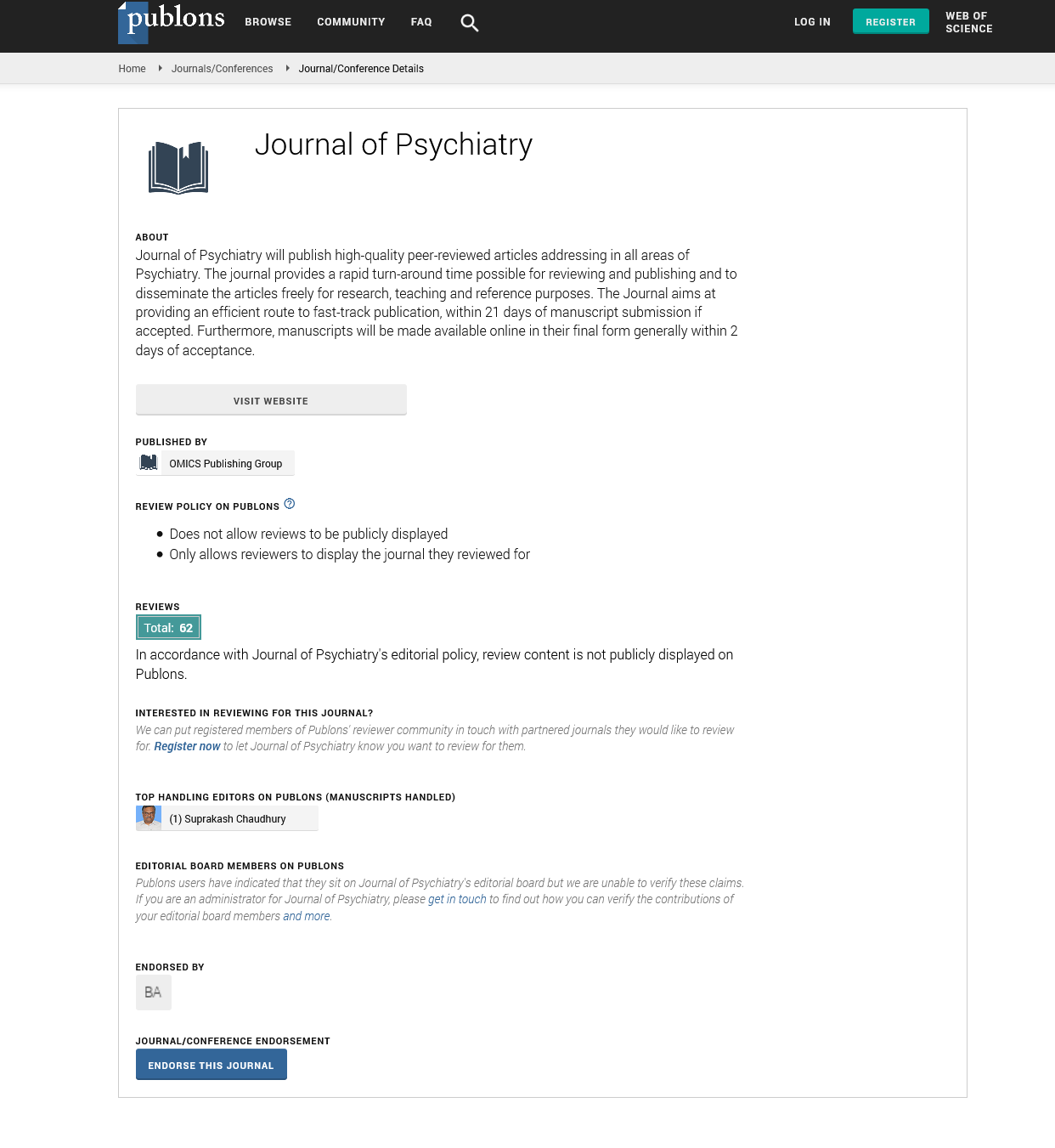Indexed In
- RefSeek
- Hamdard University
- EBSCO A-Z
- OCLC- WorldCat
- SWB online catalog
- Publons
- International committee of medical journals editors (ICMJE)
- Geneva Foundation for Medical Education and Research
Useful Links
Share This Page
Open Access Journals
- Agri and Aquaculture
- Biochemistry
- Bioinformatics & Systems Biology
- Business & Management
- Chemistry
- Clinical Sciences
- Engineering
- Food & Nutrition
- General Science
- Genetics & Molecular Biology
- Immunology & Microbiology
- Medical Sciences
- Neuroscience & Psychology
- Nursing & Health Care
- Pharmaceutical Sciences
Using the situational analysis tool borrowed from CBASP in the pursuit of chosen values
28th Euro Congress on Psychiatrists and Psychologists
July 05-06, 2018 | Vienna, Austria
Deepa Tilak
NHS, Scotland
Posters & Accepted Abstracts: J Psychiatry
Abstract:
The ???situational analysis??? tool (SA) as part of the ???cognitive behavioral analysis system of psychotherapy???CBASP???, was developed by Dr. James McCullough, specifically for the treatment of chronic depression. The concept here is to capture a ???slice in time??? and work towards examining and changing thoughts and behaviour in the service of ???chosen values???, an integral part of orienting the client towards values based behaviour in acceptance and commitment therapy. Whilst the SA was developed for chronic depression, it is unsurprisingly effective in many psychiatric disorders as ???psychological overwhelm??? and/or ???suffering??? as a result of being triggered by past traumatic experiences is, as the Buddha says is a ???feature of the human condition???. When we are ???triggered??? we tend to lose contact with the present moment. The SA succinctly and eloquently captures a ???frame in time??? so that both the therapist and client are able to remain grounded in a specific situation that is the cause of distress to the client. This facilitates being ???present??? in the moment so as to engage with thoughts and behaviors that lead to the ???desired outcome???DO??? as opposed to the familiar but distressing ???actual outcome???AO???. Noting the gap and building on what is required to achieve the DO allows the person to find and remain on the path of ???chosen values???. This tool also serves to impart agency to the client and strengthens their belief in their capacity to effect change. This workshop will teach participants how to use this tool which directly engages the client in the process of change, working towards chosen goals ???in the moment??? leading in the longer term to ???values based action???. Format of the exercise is as follows: Situation: beginning, middle and end; Reads/ Interpretations; Behaviour: actual outcome (AO) desired outcome (DO); Does the AO=DO? ; Remediation: The phase of implementing new learning; Question 1: Why is AO#DO; Question 2: What changes are required to the ???reads??? and ???behaviour???, so that AO=DO in order to achieve chosen values and values based action.
Biography :
E-mail: deepa.tilak@btinternet.com

